Abstract
Four indirect approaches, based on inquiry into a past history of haematuria, visual inspection for blood in the urine specimens, and the use of reagent strips to detect haematuria and proteinuria, were evaluated to identify persons with Schistosoma haematobium infection. These approaches were applied individually and in three different screening sequences on two populations in Ghana and Zambia in order to identify infected children and adults for subsequent treatment in both areas. Detection of haematuria using reagent strips was the single approach with the highest sensitivity and specificity. The observation of gross haematuria (bloody urine), followed by detection of blood by reagent strips, identified 87% of infected children in both areas. This screening sequence showed the highest combined sensitivity and specificity in the identification of infected children as well as adults for treatment in both areas. Differences in the results between the two countries are discussed. This study emphasizes the need for evaluation of indirect screening procedures for the diagnosis of S. haematobium infection in each endemic area so as to establish criteria for their interpretation, prior to large-scale field application.
Full text
PDF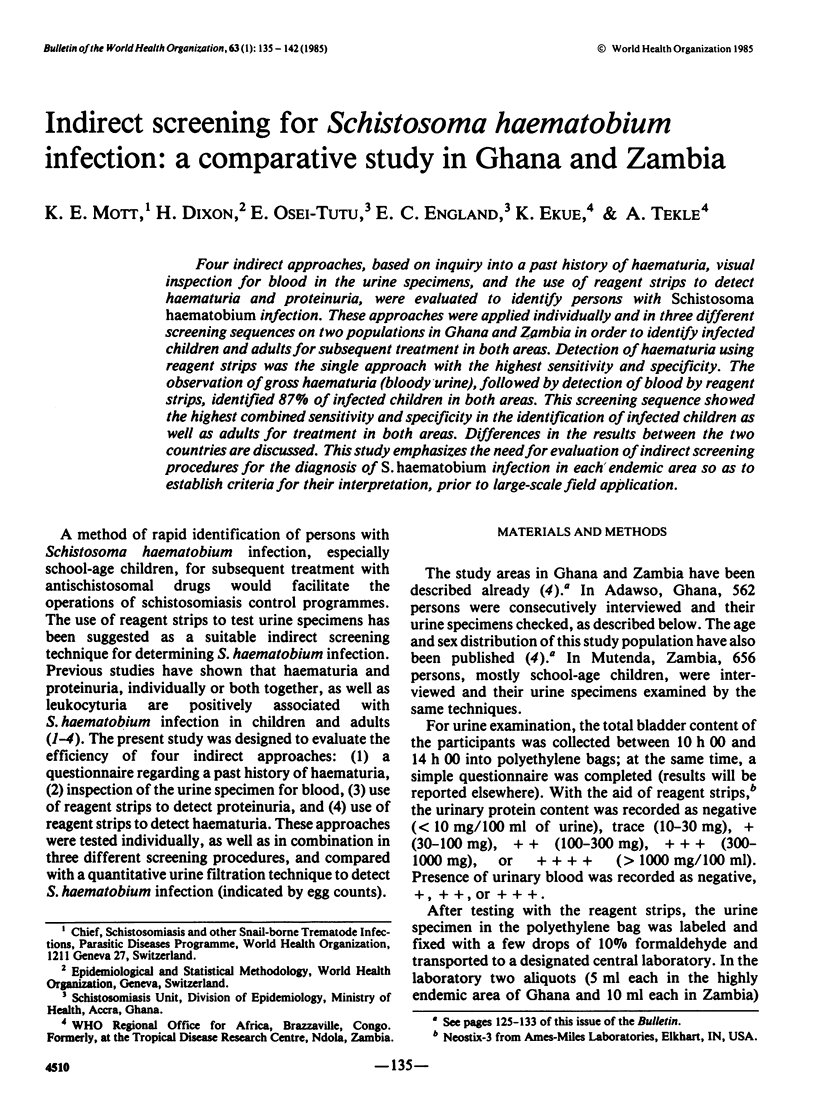
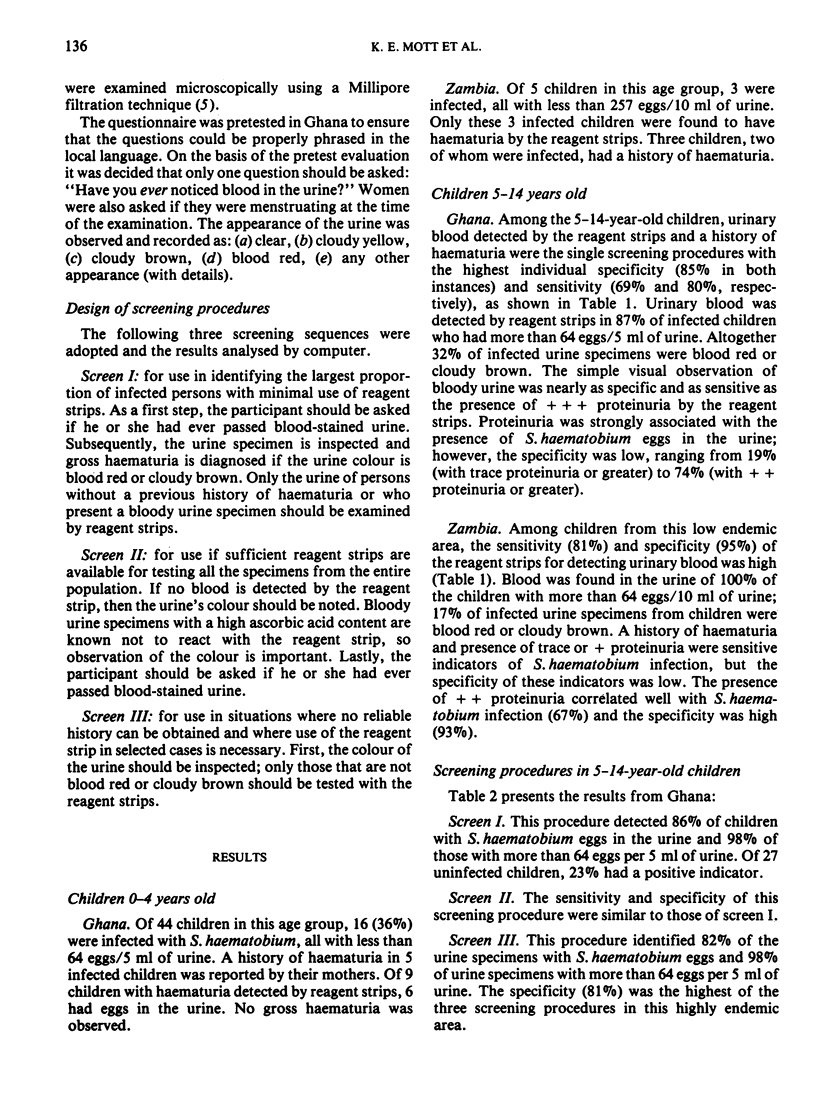
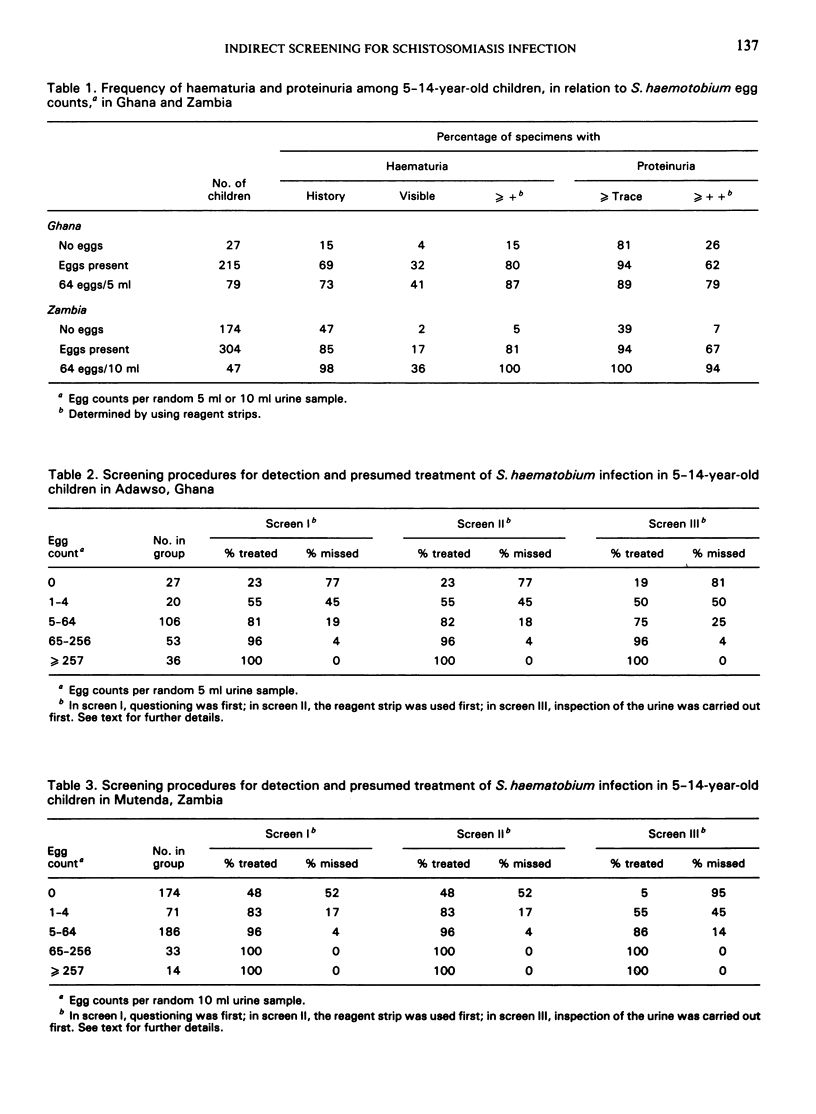

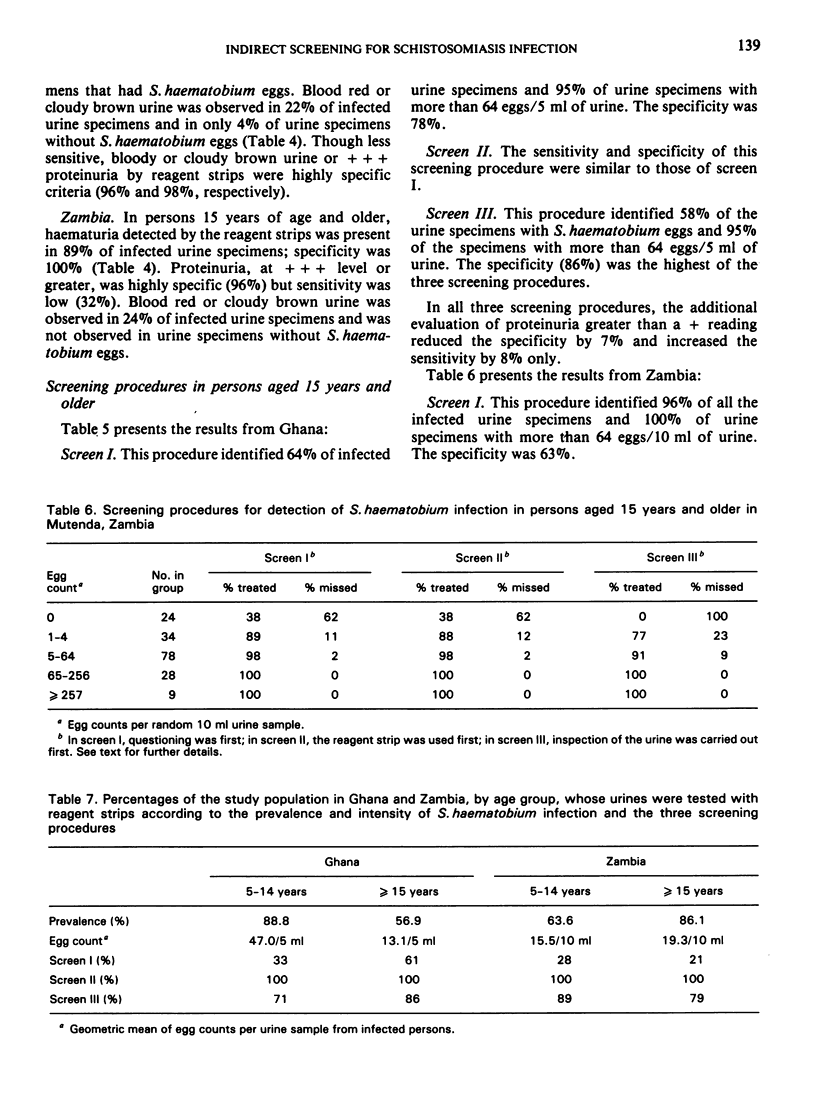
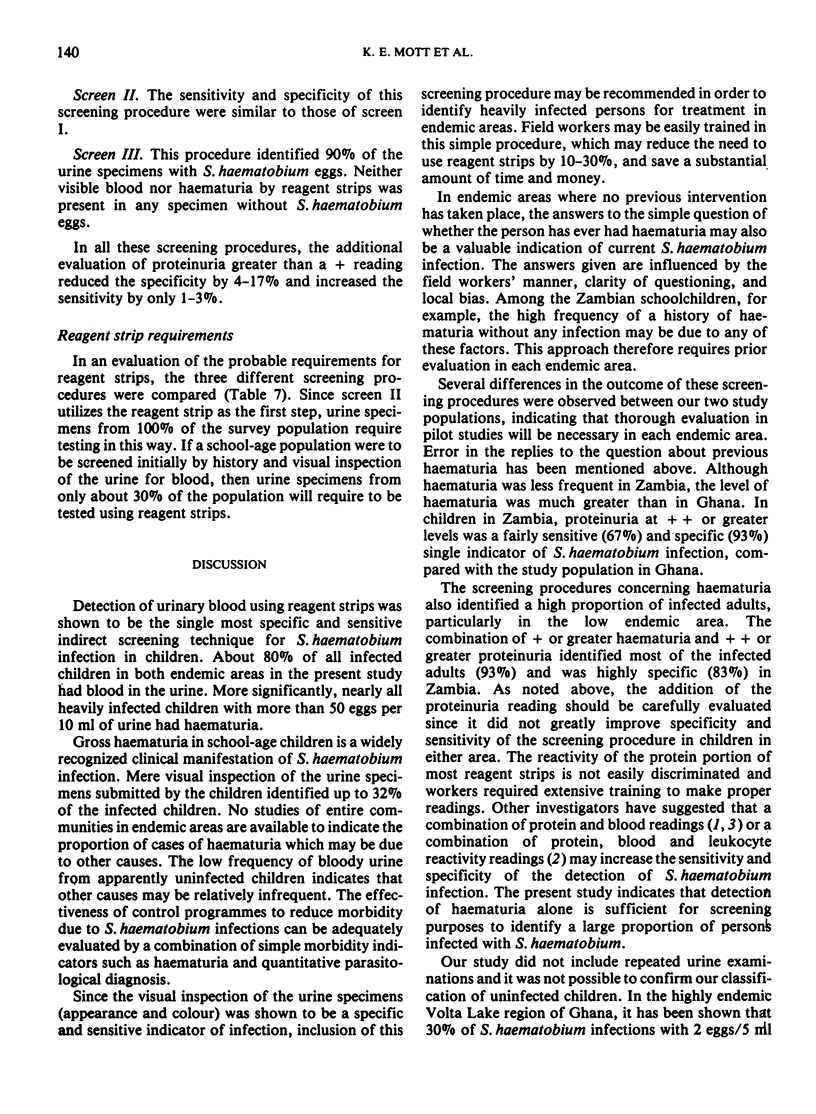
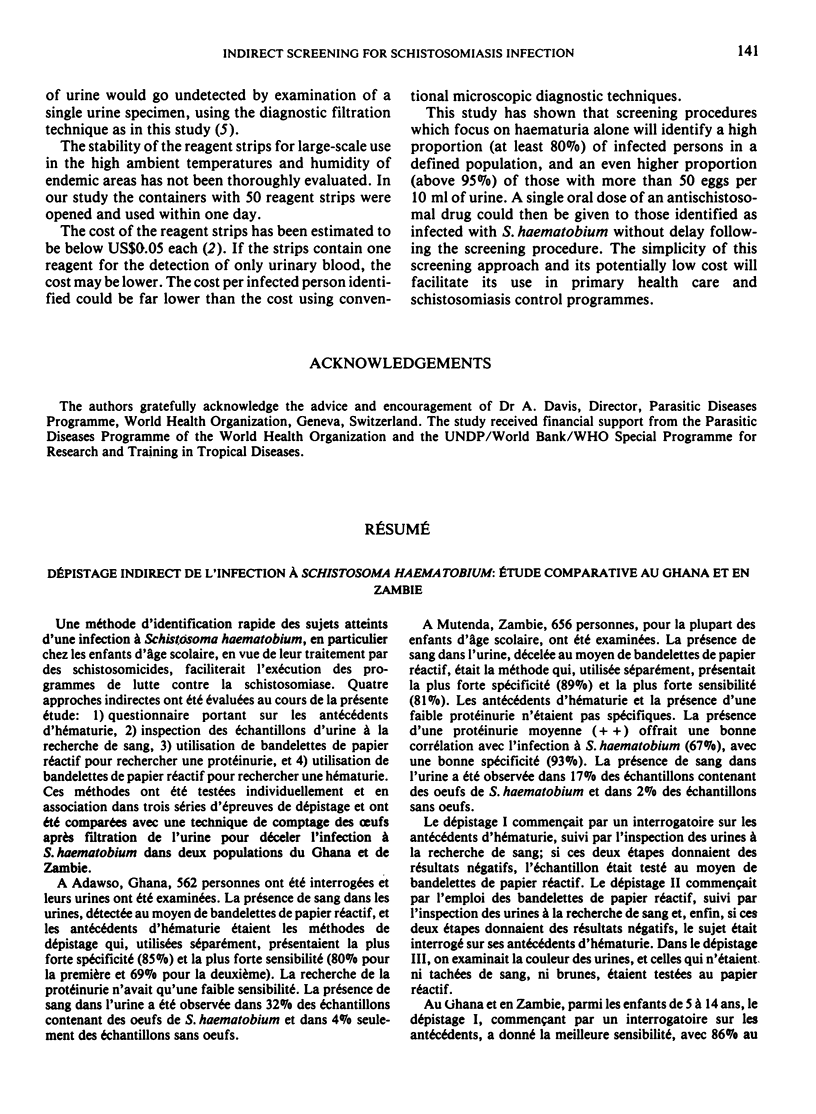

Selected References
These references are in PubMed. This may not be the complete list of references from this article.
- Feldmeier H., Doehring E., Daffalla A. A. Simultaneous use of a sensitive filtration technique and reagent strips in urinary schistosomiasis. Trans R Soc Trop Med Hyg. 1982;76(3):416–421. doi: 10.1016/0035-9203(82)90204-8. [DOI] [PubMed] [Google Scholar]
- Mott K. E., Dixon H., Osei-Tutu E., England E. C., Ekue K., Tekle A. Evaluation of reagent strips in urine tests for detection of Schistosoma haematobium infection: a comparative study in Ghana and Zambia. Bull World Health Organ. 1985;63(1):125–133. [PMC free article] [PubMed] [Google Scholar]
- Pugh R. N., Bell D. R., Gilles H. M. Malumfashi Endemic Diseases Research Project, XV. The potential medical importance of bilharzia in northern Nigeria: a suggested rapid, cheap and effective solution for control of Schistosoma haematobium infection. Ann Trop Med Parasitol. 1980 Dec;74(6):597–613. [PubMed] [Google Scholar]
- Scott D., Senker K., England E. C. Epidemiology of human Schistosoma haematobium infection around Volta Lake, Ghana, 1973-75. Bull World Health Organ. 1982;60(1):89–100. [PMC free article] [PubMed] [Google Scholar]
- Tanner M., Holzer B., Marti H. P., Saladin B., Degrémont A. A. Frequency of haematuria and proteinuria among Schistosoma haematobium infected children of two communities from Liberia and Tanzania. Acta Trop. 1983 Sep;40(3):231–237. [PubMed] [Google Scholar]
- Wilkins H. A., Goll P., Marshall T. F., Moore P. The significance of proteinuria and haematuria in Schistosoma haematobium infection. Trans R Soc Trop Med Hyg. 1979;73(1):74–80. doi: 10.1016/0035-9203(79)90134-2. [DOI] [PubMed] [Google Scholar]


